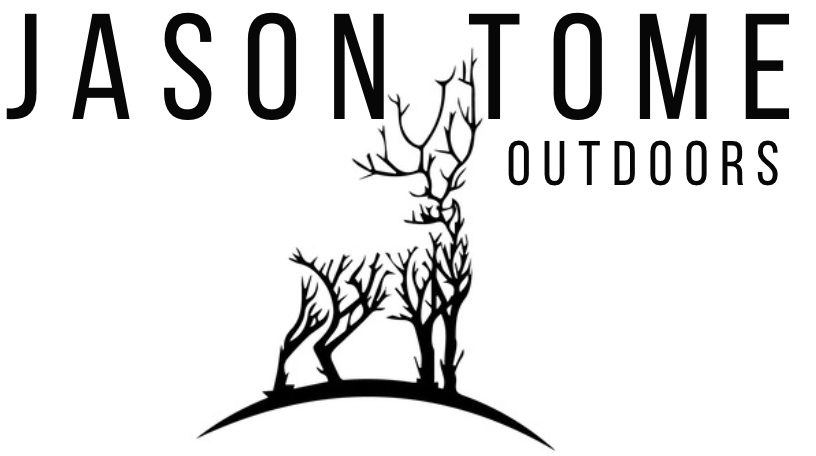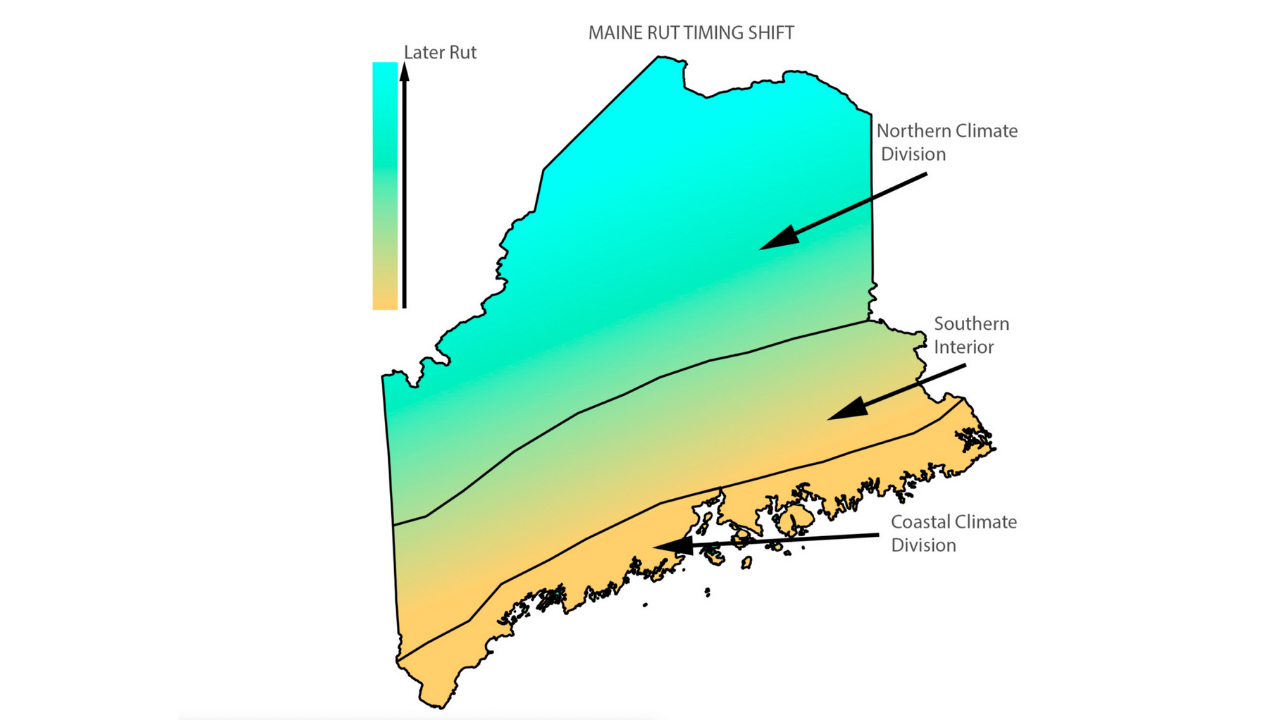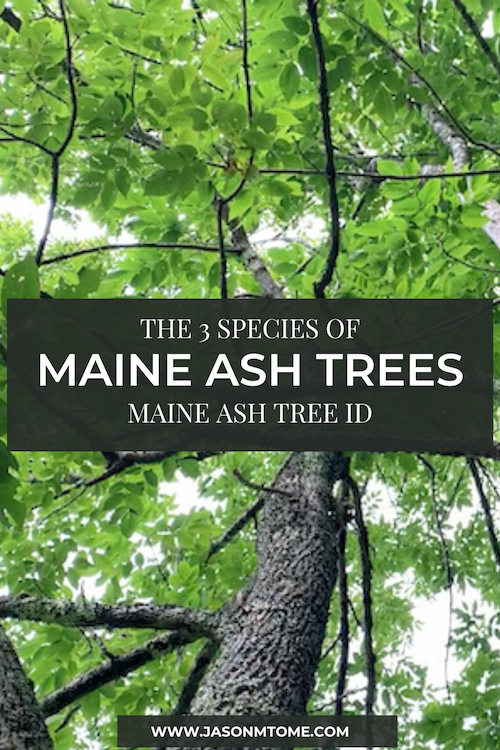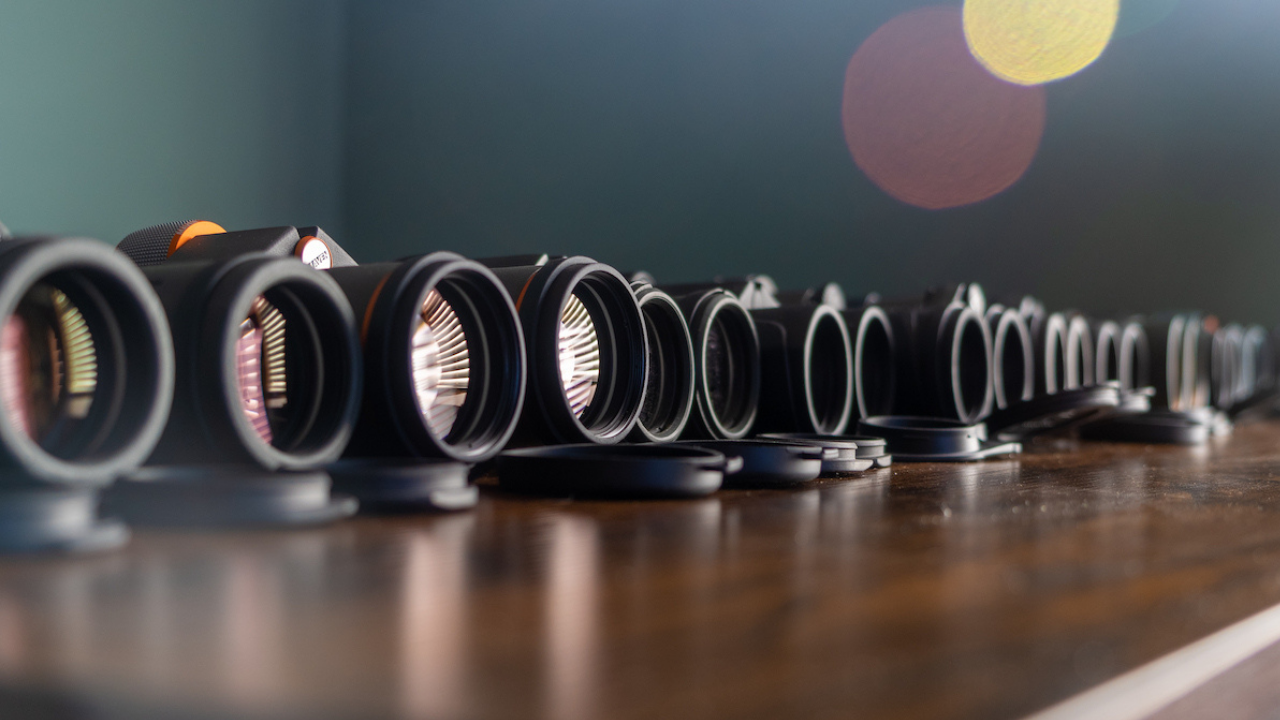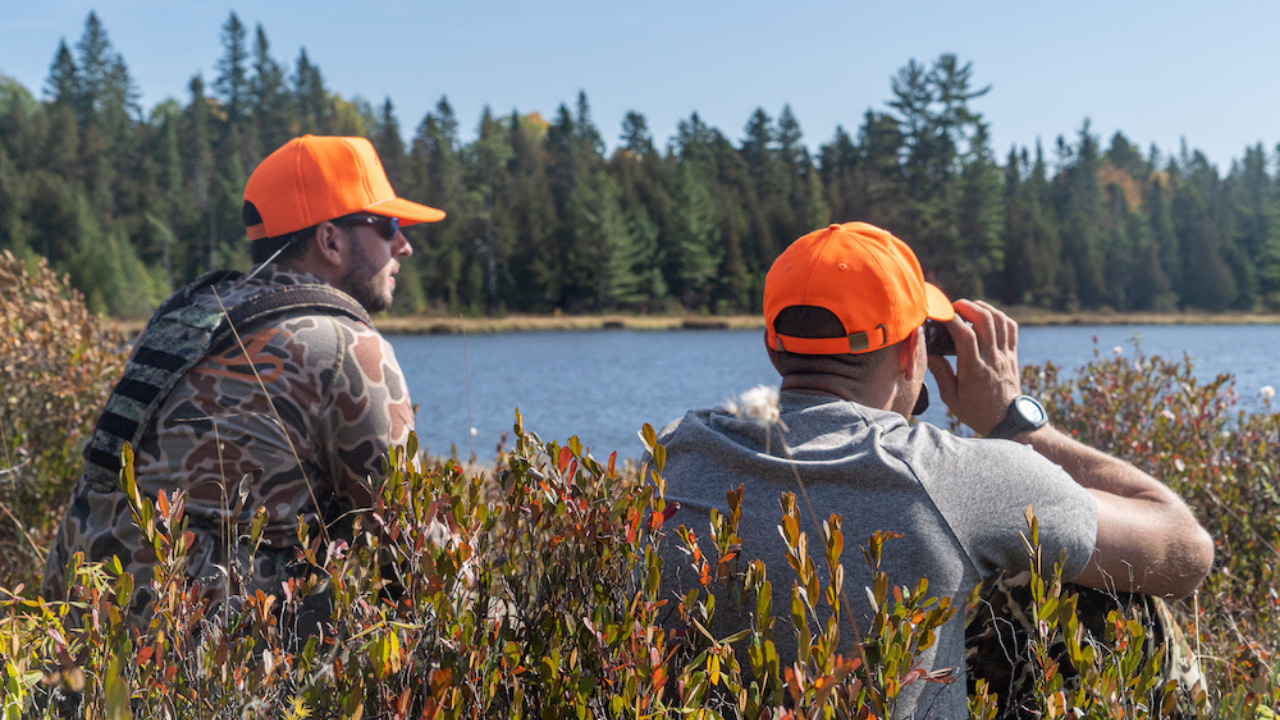There is much confusion regarding the timing of the whitetail rut in Maine. Everyone seems to have a different opinion which makes deciphering the actual rut timeframe difficult.
Understanding the rut timeframe is crucial because the rut is a great time to take a big buck and a fun time to be in the woods. On top of that knowing when the rut is will help you plan your vacation time in order to put the odds in your favor to achieve success.
I believe there are a couple of reasons why hunters in Maine can’t seem to agree on the rut timeframe. In this article, I explain the reason there are so many people with different theories on the timing of the rut in Maine. I also lay out what I believe to be a more accurate interpretation of the rut in Maine.
Table of Contents
Maine Rut Myths
First off, let me begin by cutting through the myth that the rut starts at different times each year. This is false, the rut starts at exactly the same time every year but is location-dependent. That being said, there are some factors that will influence the intensity of the rut, making some days and some years better than others. Some of these factors include temperature, weather conditions, and hunting pressure.
Understanding that the rut occurs at the same time each year made me a much better deer hunter because I was able to focus my time off from work to pick the best days each year to hunt, increasing my odds of success to the fullest potential.
Why So Many Opinions On Rut Timeframe In Maine?
Media
One of the biggest reasons hunters get confused about the rut timeframe is from the media on the subject. YouTube videos, magazines, and books seem to all have varied dates of the rut timeframe. The problem is this information comes from everywhere; the Midwest, Southern U.S., and the Northern U.S. and it is hard to sort out what applies to Maine and what doesn’t.
Climate-Related Rut Timing Shift
Honestly, it’s no wonder Mainers are confused on the subject. In my experience, Maine and northern New England are pretty unique when it comes to the rut.
What I have noticed from being on stand in southern Maine, tracking bucks in more northern areas of Maine, and data from a dozen of trail cameras placed in different parts of the state is that the rut timeframe is different depending on the average climate of a particular area of Maine. For the same reasons buck weights increase as you go more north, rut timing changes as you move north. In my article Where to Find Big Maine Bucks, I explain the concepts behind why heavier bucks are found the further north you go.
More accurately, I believe this has to do with climate more than latitude because the climate is the driving factor of bigger-bodied bucks. It just happens that colder climates are located as you continue north. However, by looking at the graph below, the climate in Maine does not change at a straight east-west line across Maine. Instead, the climate divisions are at a slant.
The images below show that the climate at the western portion of the state is colder at more southern locations than the eastern portion. This is why western Maine often has the southern-most snow during the hunting season. Whereas it is common to have to travel further north as you move east in order to find early tracking snow.
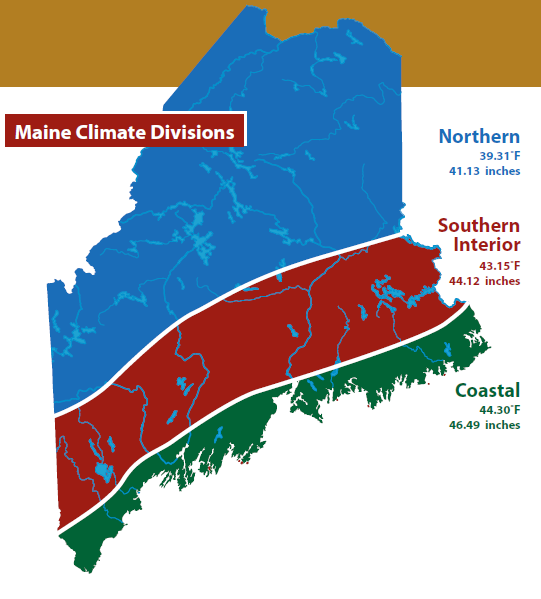

Northern Maine vs Southern Maine
For the purposes of this post, when I refer to southern and northern Maine I am referring to locations along the two division lines shown in the photos above as I have the most experience with these areas.
What I have found is that as you shift from the coastal/southern interior climate division line to the southern interior/northern zone climate division line, the rut occurs later in the season. More specifically, I’ve noticed the difference in rut timing from the coastal/southern interior division line compared to the northern division line appears to be about 10-15 days later. If you hunt further north than the northern division line, it is likely the rut will occur even later in the season, and you will have to adjust these dates accordingly to your specific location.
The Maine figure with the yellow-green-blue color gradient best represents how the rut changes over time in relation to climate. The change in the rut timing is a gradual process, day by day the peak rut will shift a little bit north as the season progresses. This information can help you stay in the peak rut longer by traveling with the rut as it progresses north.
Warmer Climate = Longer Ruts
What I am describing here is not a random theory either, it’s the same factors that influence some of the observed differences of the southern and northern rut in the U.S. In the south deer rutting behavior is much different than the northern rut. The southern rut is much longer and more drawn out, sometimes they breed all year long. This is because the south has enough warmth to support their needs energetically, and don’t have to worry about making it through tough winters.
By looking at the image below, you’ll notice the 35th latitude can be used to describe the approximate division between northern and southern rut differences. This image was taken from Deer and Deer Hunting to describe the approximate division of the northern and southern rut.
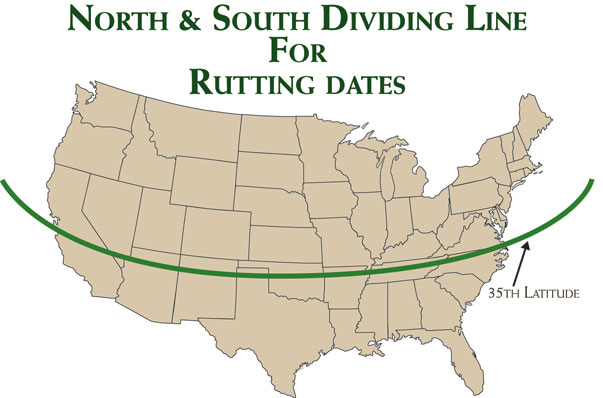
If you compare the Deer and Deer Hunting graphic with the 35th latitude line (above) to the Plant Hardiness Zone Map graphic (below), which shows annual extreme minimum temperatures you’ll notice that the 35th latitude line is located at a clear temperature shift. That being, where the warmest areas are shown as yellow and orange meet the cooler green color. The key point here is that a warmer climate in the south changes deer rutting behavior. This is observed in Maine just at a less drastic magnitude.
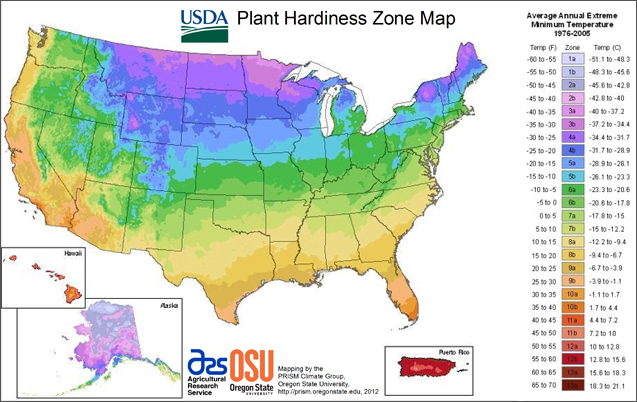
Fawn Survival
Energetics & Temperature
Although no hard-scientific research has been conducted on this topic due to the difficulty of gathering data on deer in the big remote woods of Maine, I’ve found my evidence to be very consistent and reliable over the last number years. As I collect more data and gain more experience I seem to support my theory even further. In addition, the reasons for this occurrence make perfect sense energetically.
This 10-15 day delay in northern Maine will bring increased temperatures, closer to temps that occurred in southern Maine a week prior. When northern deer breed a 10-15 days later, the does have their fawns 10-15 days later in the Spring. The fawning period is right around the time temperatures go from winter jacket to t-shirt weather. 10-15 day delay during this timeframe makes a difference for fawn survival because minimal energy is wasted on staying warm, so all energy can be used for fawn development.
The Growing Season
Additionally, the growing season starts later in the north because of the lower temperatures. The growing season is when rainfall and temperatures allow plants to start growing again. By having fawns a week later in the Spring, it gives vegetation more time to start producing abundant and nutritional food for the fawns, also helping fawn survival.
When Is The Whitetail Rut In Maine?
So, when exactly are bucks rutting in Maine? It will depend on where you are located in Maine. You’ve probably heard of the pre-rut, rut, and post-rut phases. However, there is a more detailed version of the rut that is important to understand and includes the subtle changes of the seeking, chasing, and tending phases of the rut. Below I break down each of these phases and describe what I have found to be the most accurate dates for these phases of the rut in Maine.
Pre-Rut
-
Southern Maine Oct. 10 – Oct. 20
The pre-rut is the timeframe where testosterone levels in bucks start to increase, food sources change, buck activity levels increase, and bucks have moved from their summer ranges to their fall ranges. Bucks during this timeframe are laying down scrapes, rubs, and are playfully fighting to establish dominance. Although bucks are starting to think about does, they aren’t any exhibiting rutting behavior such as seeking, chasing, or tending. If bucks have a fall range they have moved into it by now.
-
Northern Maine Oct. 1 – Nov. 7
Just like in southern Maine, testosterone and buck activity levels increase. Bucks are laying down scrapes, rubs, and checking signposts. If bucks cross each other’s paths they may fight lightly in order to establish dominance. Although bucks are starting to think about does, they aren’t exhibiting rutting behavior such as seeking, chasing, or tending during this time.
Northern Maine Pre-Rut Timeframe
The pre-rut period in northern Maine is similar to the southern zone except it is much longer. Does are not ready to be bred, and bucks in the north hang tight in the ‘thick stuff’ on mountains and in swamps in order to seek better cover now that foliage is dropping. The pre-rut starts earlier than southern Maine because the temperatures are colder earlier, so the food sources change earlier, making deer move to fall ranges sooner.
The pre-rut also runs later into the season than southern Maine. Any tracker will tell you that buck movement during the beginning of the first week of hunting season (which starts around the 1st of November) is minimal and finding a track can be tough. I believe this is the case because it is too energetically expensive to start seeking ‘local’ does until they are closer to being ready. A local doe group could be miles away and would result in a lot of wasted energy – a lot of work for little reward. Bucks will have more energy and will be able to breed more does by waiting for a more opportune time.
Bucks early in the week are sticking close to the same bedding areas they are comfortable with, just like in the south. Shooting a buck tracking during this timeframe can be a good bet because if you can find a good track, he’s usually not going to be far.
As the final week progresses, a few early bucks might start seeking and laying down more tracks.
Seeking Phase (Rut Phase 1)
-
Southern Maine Oct. 20 – Nov. 1
The seeking phase is when does are not ready to be bred, but the bucks are getting antsy so they start chasing their local does, often in daylight. In southern Maine, this time of the year is one of my favorite times to hunt because it’s the best time to shoot a target buck. Even though I’m using my bow mostly during this timeframe, I feel like my odds are better than during rifle season.
Bucks are sticking close to their local does and are usually using the same bedding areas since establishing their fall ranges. For this reason, if you know of a particular buck you’re trying to kill this is one of your best times to get him because there’s a good chance he will be up and moving. If you can get close to a buck’s bedding area without bumping him, your odds are good. He’ll often get out of his bed in daylight to go look for does.
I can’t tell you how many times the first buck pictures I’ve got on trail camera for the year, in southern Maine, were on Oct. 20th. October 20th seems to be just about the first day any true rut activity happens, with the peak seeking phase of the rut occurring around the middle of the last week in October.
-
Northern Maine Nov. 7 – Nov. 17
Buck activity in Northern Maine is similar to southern Maine during the seeking phase except it happens about 15 days later. Bucks in both the north and south are moving a lot more and in daylight hours.
The biggest difference between northern and southern Maine is that does in northern Maine are in pockets, forcing bucks to do a lot of traveling between pockets of does. Bucks in the south stick to their local does and don’t travel very far because they usually have all the does they could want in close proximity.
Chasing Phase (Rut Phase 2)
-
Southern Maine: Oct. 28 – Nov. 8
As the days continue more bucks move away from the seeking phase and into the chasing phase. During the chasing phase, few does are ready to be bred but they are close so most bucks are not ‘locked-down’ with does. During this time bucks are traveling more fiercely than any other time. With bucks up and moving, it can be an exciting time to be in the woods. Bucks that aren’t hung up with does are putting on the miles to find does.
It is harder to shoot a target buck at this time because they’re usually chasing does elsewhere, and could be miles away. That being said, your chances of shooting a random buck are increased greatly so it’s an even trade-off.
After the peak rut buck movement starts to taper off and your odds of shooting a buck start to diminish by day.
-
Northern Maine: Nov. 14 – Nov. 28
Like the seeking phase, the chasing phase in northern Maine occurs later than southern Maine During this time bucks are also traveling more fiercely than any other time and are laying down a lot of tracks looking for does. Since there aren’t as many deer in the big woods, this is one of the best times to see deer. It is also a good time to catch a distracted buck with a doe.
However, it can be tough to track a buck at this time because bucks often only have one thing on their minds, and don’t bed down very much. If the buck you’re on does not find a doe it can be hard to catch up to him that day no matter how fresh the track is.
Tending Phase ‘Lockdown Phase’ (Rut Phase 3)
-
Southern Maine: Nov. 3 – Nov. 16
The tending phase is when bucks get hung up with does. This is often referred to as the ‘Lockdown Phase’ and have found this to be more noticeable in the southern areas of Maine. When a buck gets with a doe that’s close to ready to breed he will stay by her side and try to keep her in thick cover during the entire process.
This often leads to fewer buck sightings at this time unless you dive deep into thick, unpressured, high-quality habitat, where bucks feel safe. Bucks that are not hung up with does, or that are done breeding a doe will continue to put on miles to find other hot does. Hunting pressure in southern Maine contributes to the decrease in activity at this time as well.
-
Northern Maine: Nov. 20 – Dec. 1
Because deer in the northern areas of Maine are found in pockets, I haven’t found the same effects of the lockdown phase as I have in the south. These pockets can be spaced out by miles, bucks that aren’t with does are frantically moving from pocket to pocket looking for a hot doe. This is because the woods are so vast which causes bucks that aren’t locked down to put on a lot of miles.
Additionally, bucks don’t feel the same hunting pressure as southern Maine so bucks are more willing to breed anywhere. Bucks will be moving similarly to the chasing phase because they are moving from doe pocket to doe pocket, the only difference is maybe a slight decrease in distance traveled because a higher percentage of bucks will be with does. This reduction in distance traveled makes catching up to a buck on a track easier. Once caught up, the buck could be distracted.
So, although some bucks will be locked down at this time the ones that aren’t locked down are desperately traveling far and wide to find does. This makes the lockdown phase less noticeable than in the south. In addition, doe-buck ratios are more even so there is more competition for does in the north keeping bucks on the move.
Post-Rut
-
Southern Maine: Nov. 21 – Nov. 30
-
Northern Maine: Dec. 1- Dec. 9
During the post-rut timeframe, most does have been bred and aren’t in estrous anymore. Bucks have used up a lot of energy reserves during the rut. At this point in the season, the energy it takes to find that last doe usually does not outweigh a buck’s need to rest and recover. Especially because temperatures are much often much colder, and high-quality food is scarcer. Since the cost does not outweigh the benefits, bucks focus less on does and return to survival mode.
If the opportunity presents itself, and a doe in heat happens to be nearby while a buck is in recovery mode, he will chase that doe. They are looking for good winter thermal shelter and a good source of food. For this reason, bucks are not moving very far. Hunting food sources near thermal cover can be a good bet. In the northern region’s deer start heading into their deer yards. The timeframe for yarding is dependent on the weather and snow depth.
Secondary-Rut
-
Southern Maine Dec. 1 – Dec. 10
-
Northern Maine Dec. 7 – Dec. 14
The secondary rut is a small window where does that did not get bred come back into estrous, and some fawns come into heat. It’s been said that this phase occurs 28 days after a doe has come into heat the first time. So, to put the odds in your favor use the peak rut date and jump down 4 weeks on your calendar to find the approximate date the second rut will occur.
Because only a small portion of does were not bred, you might not observe rutting this late in the season because it is location-dependent. Some areas may experience a short second rut, while other nearby areas don’t experience any secondary rut action. This is why on the graphs (above) the number of bucks during the secondary-rut is much lower. However, if you’re able to find some does and fawns around a food source at this time there is a chance one will come into heat and is an excellent time to shoot a big buck.
Considerations
Provided Rut Dates
This does NOT mean by the start and end dates that I have provided ALL activity has either started or stopped for each phase. Instead, these dates bleed into one another. Also, the dates I have provided are where the vast majority of bucks will be in a given year, giving you a statistical advantage so you can plan your hunts.
That is not to say you couldn’t observe a buck rutting earlier or later in the season, it just means the odds of seeing that behavior is less likely outside of the dates provided. This is why the graphs above are a great representation of the phases of the rut. They show that there is a slow tapering on-off effect after each phase, meaning bucks will enter a leave a phase of the rut at different times.
Sometimes there will be outliers, a buck may start chasing really early or late in the season. However, most bucks will experience very similar timings because evolutionarily they have adapted to breed during a tight window in order to birth fawns at the best time of year, energetically speaking.
Weather-snow depth
Snow depth can have an influence on these timings to a small degree in the north. Heavy snowfall will push deer into their winter patterns a little earlier than if there was minimal snowfall. This is something to consider when hunting northern Maine in order to fine-tune your hunts.
Hunting Pressure
Hunting pressure is a big factor in determining how deer move throughout the deer season. If you’re not seeing any movement in your area at the timeframes listed above it could be due to hunting pressure. Low-pressured deer will feel more comfortable expressing rutting behavior during daylight than high-pressured deer.
Conclusions
If you only have a few days to take off from work each year and want to hunt the best part of the rut, this does not mean that you should take off what I have defined as the first couple days of the rut. Not all days of the rut are created equal.
Although you might be hunting the rut, your best chance will be to take the few days surrounding the peak days of the best phases. This is when the highest percentage of bucks are moving and visible during daylight, increasing your chances to the max.
Hunters sometimes have a hard time getting away from what they have always believed to be the rut, so if you don’t believe these dates or if they don’t seem to apply to your area I encourage you to study trail camera data, tagging station data, state data, and any other information you can get for your specific region of Maine for the best results. I personally wouldn’t use information from regions that are not close to you because there could be a shift in rut timing depending on the differences in location. This caused me confusion for a lot of years.
Hopefully, this post on the whitetail rut in Maine has helped to clear up the confusion on the rut timing controversy. If you have questions:
More On Maine Hunting:
- Where to Find Big Maine Bucks
- Whitetail Energetics: Whitetail Energy Flows & Finding Big Bucks
- How To Hunt Maine Moose During The Rut – Tips For Finding Rutting Bulls
- How to Hunt Deer | 15 Easy and Effective Tips for Beginners
- 21 Maine Turkey Hunting Tips That Work | Hunting Maine Turkeys
Tracking Big Maine Bucks In The Big Woods on Snow
- Gear for Tracking Bucks in Snow – Big Woods Deer Hunting
- When Do Bucks Use Signpost Rubs? | 4-Month Trail Camera Study
- Signpost Rubs – Everything You Need To Know | Big Woods Deer Hunting
- Do Does Drag Their Feet In Snow? | Reading Deer Track Drag Marks
- Big Buck Tracks – What Do They Look Like? (With Photos) | Buck Track ID
- Best Guns For Tracking Deer On Snow | Big Woods Deer Hunting
- 3 Best Sights & Scopes For Tracking Big Woods Bucks on Snow
- Maximize Your Deer Tracking Season | Move To The Best Snow Conditions
- How to Track Big Woods Bucks in Snow – The Art of Reading Deer Tracks
- Where to Find Big Woods Buck Tracks In Snow
